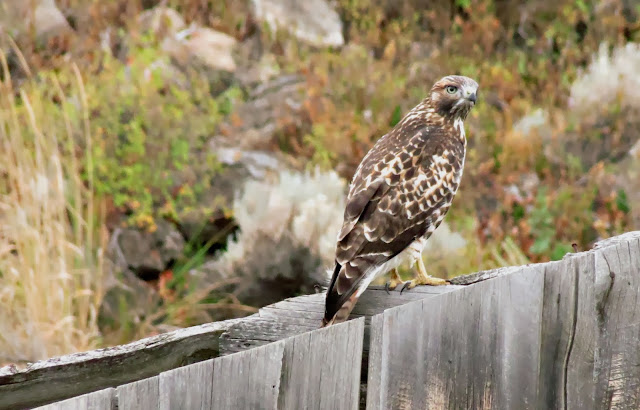I remembered to take my camera with me this morning when I took my walk. I was up early enough to reach the beach - about a fifteen minute walk - before sunrise. I always love watching the day begin over the water.
I chose to walk back home through streets to enjoy the Galveston buildings and plantings. Up north, everything was dying or going dormant for the winter. Here, we are having a second spring.
I arrived at the beach at this storm memorial in memory of the victims of the 1900 hurricane.
The birds were flying in to feed. Couldn't resist this flock of sanderlings in the sun rise.
A gull was getting ready to eat a fish.
I love the houses with the bright color combinations.
Actually I always say to myself. " There goes another rubber tree plant. Today I found three or four.
Plumbago is an common grower but very pretty on this fence.
I was amazed to find this tropical hibiscus growing outside. The only other time I've seen this was at the Missouri Botanical Garden, in a greenhouse.
Even leaves are colorful here. Some offer year round color.
Galveston is just warm enough to grow citrus. My favorite citrus, Satsumas grow well here, as do grapefruits and lemons.
Oleanders and palms are very common. Galveston is sometimes called the Oleander City and has an oleander festival in the spring. Huge old oleanders are groomed into trees, while miniature ones decorate small yards. They decorate public spaces, including freeway edges.
I think the two best things about living in Galveston are gardening and morning walks. Both can be done all year long.
I chose to walk back home through streets to enjoy the Galveston buildings and plantings. Up north, everything was dying or going dormant for the winter. Here, we are having a second spring.
I arrived at the beach at this storm memorial in memory of the victims of the 1900 hurricane.
The birds were flying in to feed. Couldn't resist this flock of sanderlings in the sun rise.
A gull was getting ready to eat a fish.
I love the houses with the bright color combinations.
There goes a rubber tree plant.
Actually I always say to myself. " There goes another rubber tree plant. Today I found three or four.
Plumbago is an common grower but very pretty on this fence.
I was amazed to find this tropical hibiscus growing outside. The only other time I've seen this was at the Missouri Botanical Garden, in a greenhouse.
Even leaves are colorful here. Some offer year round color.
While others color up only in the fall.
Galveston is just warm enough to grow citrus. My favorite citrus, Satsumas grow well here, as do grapefruits and lemons.
Oleanders and palms are very common. Galveston is sometimes called the Oleander City and has an oleander festival in the spring. Huge old oleanders are groomed into trees, while miniature ones decorate small yards. They decorate public spaces, including freeway edges.
I think the two best things about living in Galveston are gardening and morning walks. Both can be done all year long.

































 e
e























